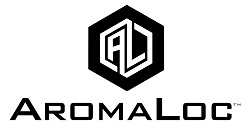[From The Wine Spectator, April, 2016]
In the southwest corner of British Columbia, a former professor of pulmonary medicine is trying to make white wines smell even better.
Dick Jones believes he has found a way to retain more aromatic compounds in wine, preventing them from being lost during fermentation. So far, local wineries are impressed with the results, and now Jones hopes to have his device, dubbed AromaLoc, patented and on sale next year.
Jones’ experiments with white wine fermentation are just the latest chapter in a busy life. He has been working on the project for the past four years following a 35-year stint teaching pulmonary medicine at the University of Alberta. Born in the United States, Jones moved to Alberta in 1971. On his summers off, he worked as a bush pilot, transporting “everything from dynamite to dead bodies” across remote stretches of western Canada in his Cessna 185.
In 2005, Jones and his wife moved to Naramata, a small valley community in the Okanagan Valley, part of the Naramata Bench region of vineyards. Not long after arriving, Jones began making wine from Pinot Gris and Gamay grapes. He loved the smells of his small lots fermenting. But when he tried the finished wine, much of the aroma was gone. Preserving aromatics is something many winemakers, especially those making white wine, struggle with. As fermentation produces aromatic esters and carbon dioxide, the carbon dioxide molecules rise and push out the aromas. Various solutions, such as cold fermentations or reverse osmosis, have not proved widely effective.
In 2012, Jones read about a new membrane developed in Norway. May-Britt Hägg, a chemical engineer at the Norwegian University of Science and Technology in Trondheim, had developed the membrane to scrub carbon dioxide emissions released by coal-fired power plants. Jones wrote to Hägg, and she liked the idea of adapting her discovery to wine.
In his first trial, Jones modified and tested a device placed over the top of a small fermenting vat. It looks deceptively simple, like a flat, shiny piece of plastic paper, but hundreds of tiny membranes, each thinner than a single red blood cell and invisible to the human eye, are on one side. When the wine ferments, the carbon dioxide passes through, but aroma compounds, because of their shape and chemical makeup, are trapped inside.
Jones credits his career in pulmonary science to recognizing the setup’s potential: Human lungs are designed to release carbon dioxide and keep everything else in. “This is almost exactly the same process we use when we’re breathing,” he said.
In 2015, Jones partnered with Pentâge Winery co-owner Paul Gardner to try the process on commercial-size fermenting vats. For their first vintage, they fermented 700 liters of Pinot Gris in a 1,000-liter tank. Instead of using a plastic sheet on top, the sealed vat was connected to 18-inch-long rubber tubes holding thousands of membrane strands inside. The whole prototype is roughly the size of a suitcase.
Once the wine was ready, Gardner organized a panel of 16 wine industry members, who blind-tasted the AromaLoc Pinot Gris and another Pentâge Pinot Gris. All of them preferred the wine fermented using the membrane. Samples of the wines were then analyzed for aroma compounds at the University of British Columbia’s Wine Research Centre. The AromaLoc wine showed much higher levels of the compounds than the other wine.
One of the tasters who cited noticeably higher concentration and intensity of aromas in the membrane-treated wines was Marcus Ansems, co-owner of Daydreamer Winery. He said the trial wines’ aroma was stronger, though so was the perception of alcohol. Ansems believes the filter would be ideal with cool-climate white wines such as Riesling that have low alcohol but delicate aromas.
“What’s appealing is that you’re not adding anything to the wine, you’re using what’s already there,” he said. Another panel member, Alison Moyes, is a winemaker at the nearby Liquidity winery. “I was skeptical at first, but the difference was obvious. It was interesting to see this [process] with such a neutral variety like Pinot Gris.” Moyes liked it enough that she signed up to receive one of eight AromaLoc prototypes Jones is offering for this year’s harvest, free of charge. She plans to try it on a vat of Viognier.
For now the AromaLoc’s patent is pending, and Jones says the device will be commercially available in 2017. In the meantime, Gardner is bottling the Pinot Gris and will sell his traditional Pinot Gris 2015 and the membrane-treated wine, labeled Pinot Gris PSW, in a two-pack. Even though the two wines are not yet officially for sale, Jones says requests for the wines have already exceeded supply.
“This is really something,” he chuckled. “Will other people like it? I don’t know. Our tasters sure liked it.
